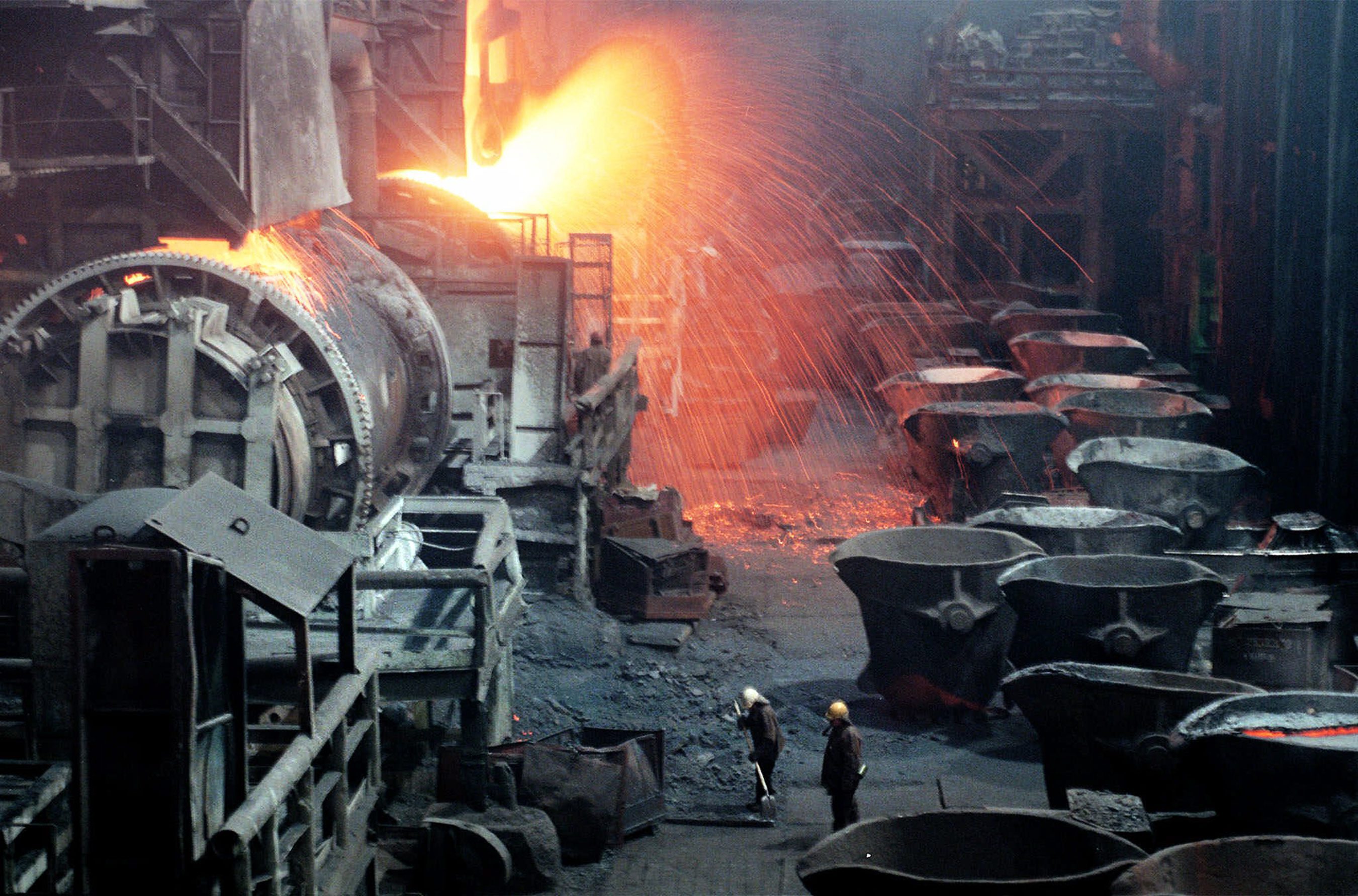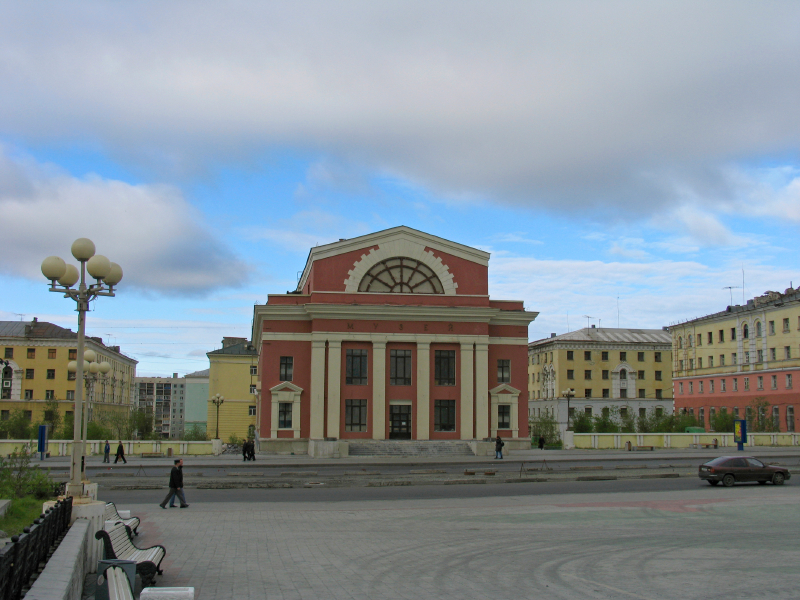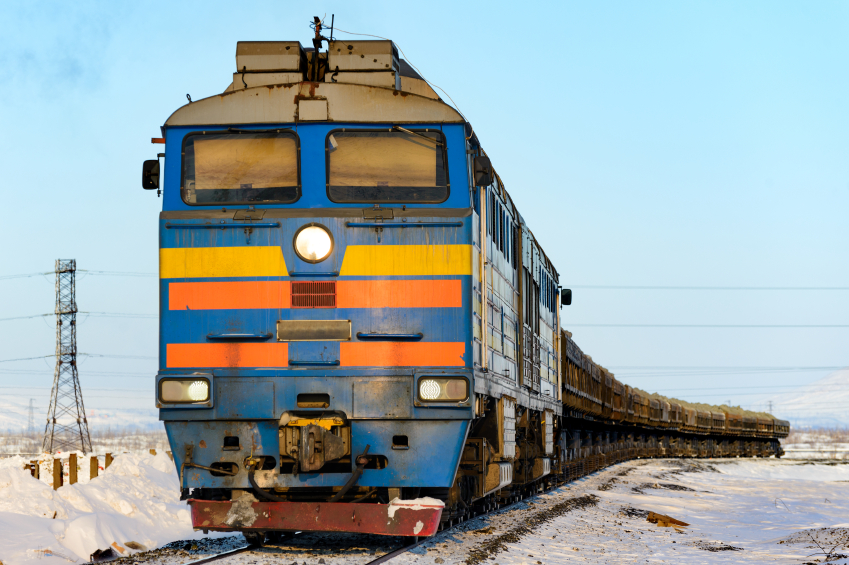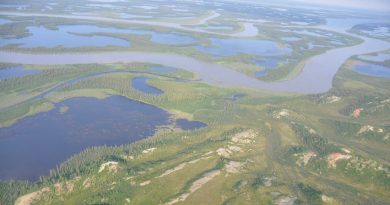Blog: Norilsk, Russia -The inescapability of the company town on Russia’s tundra

There are many ways of framing Arctic climate change.
On the one hand, countries in the south often see themselves as potential victims of the melting Greenland ice sheet and rising sea levels. On the other hand, in the north, Arctic residents often view themselves as the victims of massive levels of industrialization and urbanization in the south. Most of the world’s greenhouse gases emissions, after all, can be traced to the United States, China, Europe, and Russia [1]. These emissions are driving environmental changes like warming temperatures and ocean acidification, which are exacerbated in the north by the polar amplification effect. Arctic residents then wonder whether it is fair for them to have to pay, often with their traditions and livelihoods, for people in the south to enjoy all the creature comforts of modernity.
But it’s not so simple as that. The Arctic, too, has sooty, polluting cities, some of which have a higher carbon footprint than cities in the middle and southern latitudes. Several of these can be found in the Russian Arctic, which is more industrialized than any other Arctic country’s northern area. Starting in the 1930s, the Soviet Union began a massive push to industrialize and conquer the north. Millions of people were forced to move to inhospitable places like Vorkuta and Magadan, which quickly mushroomed into burgeoning cities on the tundra. They were, in essence, temples to Soviet delusion. From 1926-1989, the urban population of Siberia (not all of which is in the Arctic) rose by 448%. In 1926, Siberia’s level of urbanization was only 13.3 percent; by 2010, it had reached 72 percent [2]. Today, Siberia has a higher level of urbanization than countries like Italy and Turkey. Far from living in pre-modern dwellings and using only Siberian huskies to get around, many denizens of the Russian Arctic live in high-rise apartment buildings, drive cars (specially outfitted to cope with -40 temperatures), and upload videos to YouTubeabout daily trials and tribulations.

While only eight percent of Russia’s population lives in the Russian Arctic, the region produces some 60 percent of raw materials [3]. Given all of this large-scale natural resource extraction, the per capita carbon emissions in the Russian Arctic are likely extremely high. Russia’s most polluting metropolis is Norilsk, the world’s second largest city north of the Arctic Circle. The city was the main center of operations for the Norillag gulag camps, where thousands were forced to work in the mining-metallurgical complex.
Today, in this city that now has a population of 175,000 people, nickel ore continues to be mined and smelted at great expense to human health and the environment. After watching this official Norilsk Nickel video, which describes in celebratory terms how metallic dust, fire, and water all combine to smelt nickel, it’s no surprise that the city is one of the ten most polluted places on earth. The narrator lauds, “Horizons are illuminated with the sparks of the polar lights, and hot flames blaze in the manmade furnaces. Work never ends under the surface in the mines.” The Soviets’ worship of technology, modernization, and labor lives on in Norilsk.
The city is basically a giant company town for Norilsk Nickel, which produces more nickel and palladium than any other company in the world. Nickel, in turn, is used to make stainless steel – a product that is used in all sorts of infrastructure, including icebreakers and ships, which in turn help to advance development even further into the Arctic.
Since Norilsk Nickel is not affected by the U.S. and European sanctions on Russian energy companies, lately, it has become an even more important source of foreign currency for Russia. The Moscow-based firm is also selling off stakes it holds in operations in other countries as it focuses on furthering its Arctic activities. Last month, as Reutersreported, Norilsk Nickel began pilot operations at the Talnakh concentrator just north of Norilsk. The company’s also gotten slicker at promoting itself, as seen in this newer YouTube video (it’s in Russian, but language skills aren’t necessary to catch the drift).
The Arctic industrial-urbanization complex
Whereas the economies of many cities in the south are service centers, urban centers in the Russian Arctic by and large depend on natural resource extraction. This means they need to import large amounts of supplies to fuel production. This is an issue that faces cities across the Arctic, especially those that are poorly connected to national transportation grids. I would venture a guess that many northern cities have relatively high carbon footprints due to the sheer amount of fuel, food, and other supplies that must be trucked, shipped, and flown across vast distances every year to keep them running. It’s not just oil and coal that are being brought in, either. The drive by societies based in the south to industrialize the Arctic brought everything from bulldozers to bread to alcohol to the northern latitudes. Many residents of the Arctic became used to receiving these amenities, too.
Delivering all of these resources produced more cheaply in the south comes at a price in the Arctic, both in terms of the greenhouse gases emitted to transport an item from a place like Moscow to Norilsk or California to Alaska and the sheer cost of the item that the customer pays. A recent story in The Moscow Times highlighted the difficulty with providing staples at an affordable price to Norilsk’s residents. The price of sugar and eggs have risen more than in the rest of Russia. Norilsk Nickel runs, at a loss, a chain of seven grocery stores called “Sunflower.” They sell milk, bread, and other essential groceries at a discounted price compared to other stores, but there are not enough of them to significantly lower the average price of goods for residents of Norilsk.
Still, a fortune can be made in Norilsk, and that is what lures many people to work there. The Russian government subsidizes the cost of living in the Arctic by providing housing subsidies, while both public and private sector employees receive higher-than-average wages. Some companies even provide longer holidays or occasional free plane or train tickets out of the Arctic for much-needed getaways. Bread and circuses in the Arctic, in other words.

Norilsk: The exemplar of the Anthropocene
In a 2012 article in the Swedish journal Ambio, Seitzinger et. al. wrote,
“The sustainability of a city can no longer be considered in isolation from the sustainability of human and natural resources it uses from proximal or distant regions, or the combined resource use and impacts of cities globally.”
In this light, Arctic cities like Norilsk appear drastically unsustainable. But without it, the world would be short a large amount of nickel – especially since Indonesia, which produces 30% of the world’s supplies, renewed an export ban on the commodity last August in order to help stimulate the domestic smelting industry. Without strict environmental regulations and enforcement, however, remote islands across the Indonesian archipelago could turn into the Norilsks of the tropics. 63 smelters could be built in Indonesia by 2017, many of which are receiving investment from Chinese companies, according to Bloomberg. China, which purchases a third of Norilsk Nickel’s nickel exports, is partnering with the company to expand operations in Chita, in southeastern Russia not too far from Lake Baikal.
NASA explains that Norilsk, which has one of the world’s biggest heavy-metal smelting complexes, produces one percent of all global emissions of sulfur dioxide. Additionally, Time Magazine, referencing a report from The Blacksmith Institute, notes that “more than 4 million tons of cadmium, copper, lead, nickel, arsenic, selenium and zinc are released into the air every year.” Land degradation has reached such extremes that the heavy metal pollution around Norilsk “is so severe that it is now economically feasible to mine the soil, which has been polluted so severely that it has economic grades of platinum and palladium.” Norilsk’s environs constitute a landscape that has reached a new nadir of pollution: one that has been so saturated with chemicals and metals that it has transformed against all odds into economically productive land. This is all the more ironic given the pervasive myth of the pristine Arctic.
The view from space
So the Anthropocene – the era in which humankind’s impact on the planet is visible in the geological record – has undoubtedly made it to Norilsk. But, unless you are Russian, good luck getting there yourself: due to its “strategic importance,” the city has been closed to foreigners (except Belarusians) since 2001. This is where remote sensing enters the picture. Thanks to Google Earth, one can now explore Norilsk without having to breath in the noxious fumes or watch the acid rain drops fall.
Seen from above, the sharply gridded city blocks strikingly contrast with the organic forms of the lakes that dot the surrounding tundra to the east. The apartment buildings’ bold paint jobs are the result of city planners’ attempt to bring some color to the sulfur-dioxide-filled surrounds. To the west, where many other cities might have a lake or an ocean, Norilsk has a tailings pond (not visible in the photo, in which the body of water on the left side is a lake).
And in Talnakh, Norilsk’s neighbor to the north the new concentrator has entered into pilot operations, Soviet apartment blocks appear to rise out of the ground in Google Earth amidst rusting machinery. An eleven-car sits silently on the railway. The train will, in all likelihood, deliver freight to the nearby port of Dudinka on the Yenisey River, which will then be carried on one of the five-ice class vessels owned by Norilsk Nickel across the Northern Sea Route. Norilsk prides itself on its “transportation independence,” but this is a sham. The only transportation independence is for the nickel, whose route to ports like Rotterdam and Hamburg is rendered smooth and seamless. People, it seems, have fewer ways out of Norilsk than the alloy. Without any passenger railways or roads connecting to the rest of Russia, the only way out is to fly.
Norilsk Nickel operates its own airline, called Nordstar, with service to resort towns like Sochi and cities in Turkey, Bulgaria, and Egypt. But it appeared that at the end of 2013, the company was mulling selling off Nordstar because “managing the two airlines has proven too complex and intricate an investment to sustain for a non-core asset.” A company can manage one of the world’s largest mining and smelting complexes, but it apparently struggles to operate a passenger airline, whose benefits to the company itself are not as obvious.
In Norilsk, on Vokzalnaya Boulevard (Boulevard of the Railroad) stands a railway station that epitomizes all the false promises of the Soviets when they tried to conquer the Arctic. The grand building was erected under Stalin in anticipation of a rail connection to Moscow, but when he died, construction of the railroad ceased. This photo of the decrepit railway station taken by Peter Prokosch for GRID-Arendal captures the lack of mobility of people in Norilsk and many other cities across the Arctic. All the talk about Arctic transportation shortcuts, new ports, and faster shipping routes will benefit the movement of commodities first and foremost – not people.
A comment by a person who claimed to be born and raised in Norilsk on a fascinating National Geographic photo essay about Norilsk offered,
“All Norilsk people think and many say: “We all love this place very much and we all dream about leaving (get out of) this place as soon as possible.”
The nickel will be leaving town sooner than the miners, even though they have, in the words of Norilsk Nickel, put their hearts into the product. The older, propaganda-style company video mentioned above proclaims,
“The human heart is the main component of any alloy, and it cannot be replaced by a machine. Should one not give his heart to this complex business, nothing will come out of it.”
To a certain extent, this is true: no nickel would be produced without the dedication of the people who sacrifice decades of their lifespans to work in the mines and smelting facilities. And so the city that sprang up out of the Russian tundra continues to churn, pumping out shiny smelted nickel that will be shipped by rail and sea to the rest of the world while the people and pollutants remain on the ground.
Sources
[1] World Resources Institute (2014).[2] Brunn, S. D., Williams, J., & Zeigler, D. J. (Eds.). (2003). Cities of the World: World Regional Urban Development. Rowman & Littlefield (p. 242).
[3] Ingram, J. (1999, April 4). “In Russian Arctic, Government Subsidies Dry Up and Residents Want Out.” Associated Press.
This post first appeared on Cryopolitics, an Arctic News and Analysis blog.
Related stories from around the North:
Canada: Canada showcases Nunavut designs at Venice Biennale, CBC News
Greenland: Greenland circumpolar conference looks at Arctic cities, CBC News
Sweden: The New Kiruna – A meeting place for past and future, Radio Sweden
United States: Alaska military sites vulnerable to climate change, Alaska Dispatch



